Pelargonium "Rafaella": description and cultivation
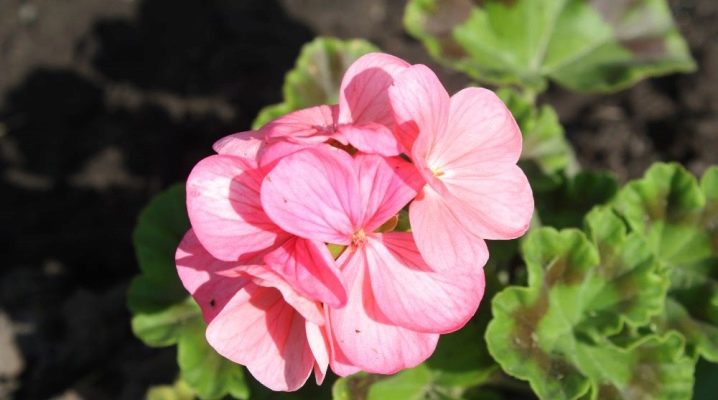
Pelargonium is a beautiful plant of the Geraniev family, which is why it is often mistakenly called geranium. In fact, this is a completely different flower that can be grown both in the room and outdoors. How to do this correctly will be discussed in this article.
Description
Pelargonium is a semi-shrub or herbaceous plant native to South Africa. That is why the flower is quite picky about lighting, but at the same time tolerates a slight drought relatively calmly. The stems are quite branched, while depending on the variety, they can be either straight or creeping. The leaves of Pelargonium are ordinary finger-like, although sometimes finger-dissected ones are also found.
The flowers are small, collected in umbellate inflorescences. Their color can be anything. Pelargonium is often found white, pink, red, or orange. In place of the flowers, an unusual seed box appears over time, while the sepals under it are preserved. Its exclusivity lies in the fact that disclosure does not occur from top to bottom, but vice versa.
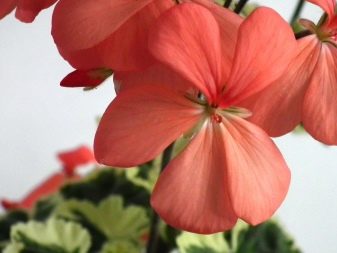
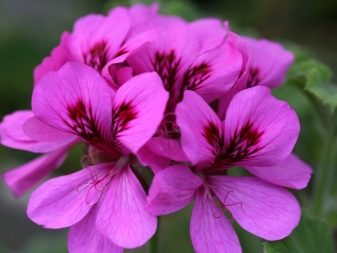
Varieties
On the shelves of stores today you can find 2 varieties of seeds of this species.
- Common pelargonium. It is such a flower that is most often confused with geraniums. They both have a specific aroma, their leaves and flowers are very similar to each other. The flower is grown exclusively in closed ground - rooms, greenhouses or warm glazed balconies.
- Hybrid pelargonium. This variety has appeared relatively recently. Such a flower differs from its predecessor in higher and more powerful stems, as well as more lush and voluminous inflorescences. In addition, the color of the flowers themselves of such a hybrid pelargonium can be absolutely any, and the color palette is much more diverse.
Let's talk about the brightest representative of such a hybrid plant, the intricacies of its cultivation and the choice of seed material.
"Raphaela F1"
This is an amazing variety of pelargonium. It is distinguished by a variety of colors, extraordinary beauty and attractiveness. Even one such plant can significantly improve and refine the appearance of an entire flower garden and add a touch of celebration to an ordinary room. The height of Rafaella pelargonium can reach 40 cm, and the diameter of the inflorescence-buds themselves is 15 cm, the color of the flowers is always bright, juicy and saturated. The leaves are dull, dark green, to the touch, as if covered with a soft and invisible fluff.
Stems are powerful, straight, with few lateral shoots. Pelargoniums, like any other flowers of the geranium family, have a rather pronounced specific aroma. It is easy to smell it with just a little stirring of the plants. Today there are several varieties of this variety of pelargonium.
- "Rafaella alaya" Is a compact plant with a pronounced branching of the stems. Its height is about 30 cm. Flowers are collected in spherical dense inflorescences, which are strewn with a scattering of small scarlet flowers. Sometimes their other color is also found. Stems are powerful, erect.

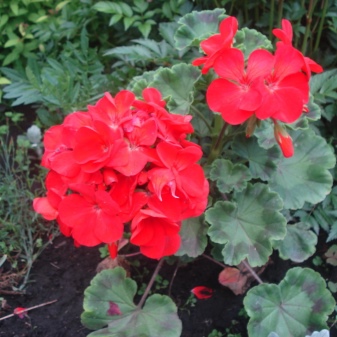
- "Rafaella pink" - this is a pelargonium with powerful erect stems, about 30 cm high, lush inflorescences rise above them, the diameter of which can reach 12 cm.The color of the flowers themselves is from pale pink to dark saturated, almost purple.

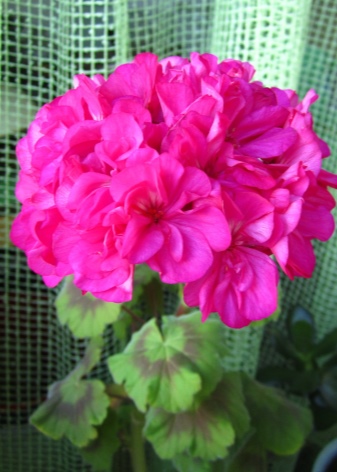
- "Raphaela mix of colors" - dense, strong and vigorous, but at the same time beautiful and small plants about 30 cm high.The inflorescences are large, rising above the leaves, the shape of which is palmate with pronounced veins. The color of the leaves is dark green, they are soft and velvety to the touch. The size of the inflorescences is about 10 cm.
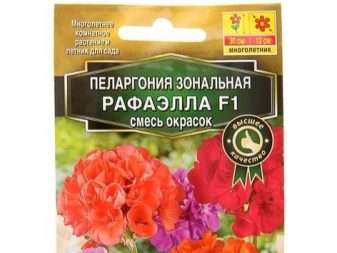
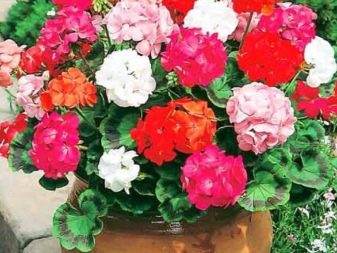
The following varieties of pelargonium have similar characteristics:
- Rafaella White;
- Rafaella Orange;
- Rafaella Peach.
The main difference between them is in the predominant color of the flowers, from which they got their name. Florists note that often, even on plants sown from the same bundle, flowers of different colors appear as a result.
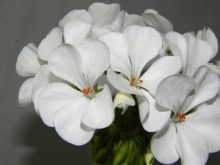

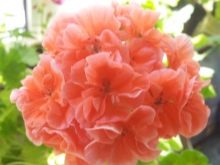
How to grow?
Pelargonium, like geranium, can be propagated at home in two different ways. Moreover, each has its own nuances.
Cuttings
The main advantage of this method is that at the same time, all the unique properties and characteristics of the selected plant variety are preserved. The material itself is harvested only from spring to early autumn. It is not recommended to collect cuttings during the hibernation period of pelargonium.
It is best to choose stems for planting with 3 true leaves, the length of which does not exceed 7 cm. After cutting from a bush, they are left in the fresh air for easy withering for 2-3 hours. Before planting in a pot, the cut site is lightly treated with a special agent designed to stimulate the formation of the plant's root system. Only a special substrate intended for the Geraniev family must be used as a soil.

The cuttings are installed in the center of the container so that there is at least 5 cm of soil under them, they are also covered with a substrate from above to the edges of the container and watered. The seedlings are installed in a well-lit place with a temperature of about 22 degrees above zero and left for 15 days. If necessary, the seedlings are irrigated, but they are watered at the root without touching the leaves. After about a month, the flower will take root, and after another couple of weeks it should be planted in a larger container.

Sowing seeds
Such cultivation of pelargonium at home is carried out from January to the end of February. If desired and in the presence of special phytolamps, the procedure can be carried out in December. You can use peat tablets for planting. The advantage of this method is that there is no need for further picking of plants. The sequence of actions will be as follows.
- The tablets are soaked in warm water for 10-15 minutes.
- Install them on pallets tightly to each other.
- One seed is placed in each tablet. Sprinkle lightly with water on top.
- Crops are placed in a warm and well-lit place.
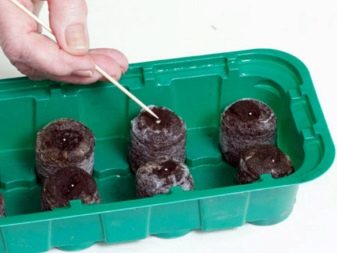

If everything was done correctly, the first shoots will appear after a week. Pelargonium is transplanted to a permanent place of growth when there are already 2 true leaves on the seedlings. You can sow seeds in the traditional way in containers. To do this, drainage is poured into the container at the bottom with a layer of 3 cm, and on top of a special soil for pelargonium, it is spilled well.
Seeds are laid out on the surface of the substrate and sprinkled on top with soil no more than 2 cm thick. The surface of the crops is irrigated with water. Harvested in a well-lit place without direct sunlight, before shoots appear. Regularly monitor the moisture content of the substrate - when its top layer dries, the seedlings are watered along the root. The temperature should be 20 to 23 degrees above zero... Pelargonium picking is carried out when 2 true leaves appear. And when there are 5 of them, the flower is transplanted to a permanent place.
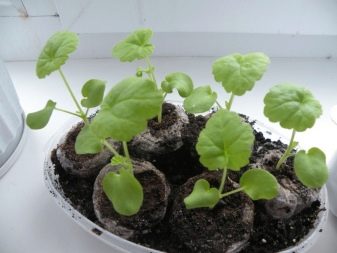
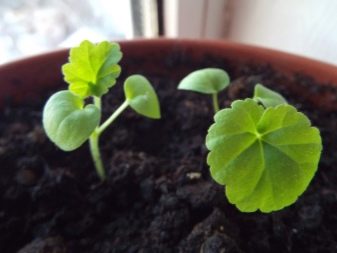
Correct care
To make this plant really lush and beautiful, it is necessary for him to carry out such minimal care.
- Topping. The first time the procedure is carried out when there are 5 real leaves on the flower, the stem is carefully cut off the top of them. In the future, pinching is carried out every 2 months.
- Regular watering. It is necessary to irrigate pelargonium as the substrate dries to a depth of 1 cm. The water should be at room temperature and purified or filtered.
- Fertilize pelargonium stands only during the period of its active flowering, with special means intended for feeding.
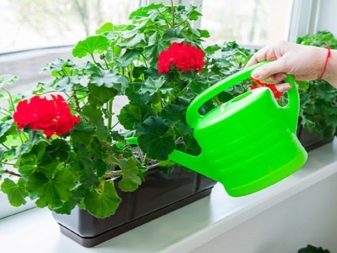
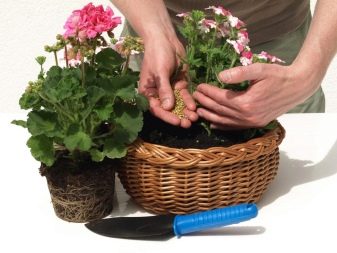
And yet, for the formation of a beautiful and healthy bush in the fall, it is necessary to prune the plant. During the procedure, all yellowed, diseased or dried leaves and stems are cut off. Such basic but regular care will allow you to admire the beautiful and healthy pelargonium almost all year round.
For how to sow homemade pelargonium, see the next video.































Thank you so much for the article! Briefly, accessible, clearly, thanks again.
Thanks. I'm going to do as you suggest.
The comment was sent successfully.